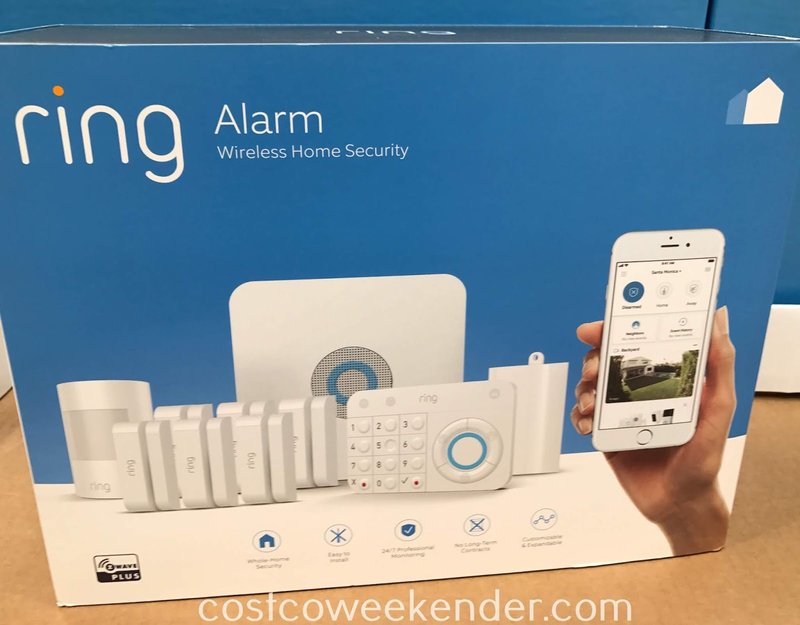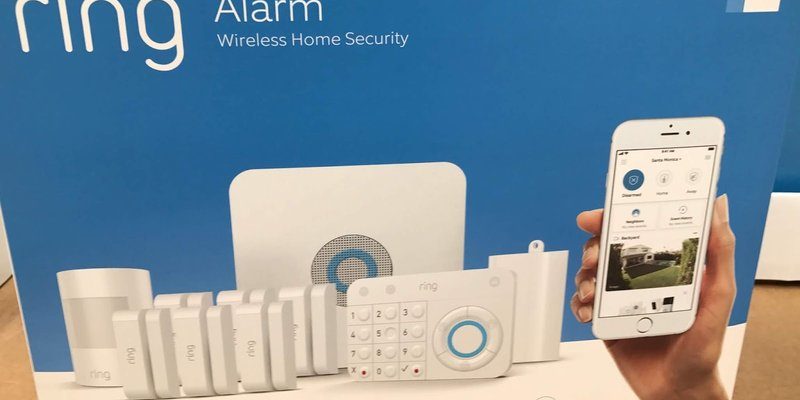
Let’s be honest, the idea of warranties isn’t exactly thrilling. It’s one of those details you don’t think about until something breaks. But understanding how long Ring’s standard warranty covers you (and what it actually covers) is kind of like knowing where the spare tire is before you get a flat. You hope you never need it, but if your device acts up, you’ll be glad you took two minutes to find out. Here’s everything you should know about the standard warranty for Ring security systems—broken down in plain English, no legalese required.
What Exactly Is the Standard Warranty for Ring Security Systems?
Here’s the thing: Ring offers a *standard one-year limited warranty* for most of its security system products, starting from the date you bought them. This applies whether it’s a Ring Alarm base station, a Doorbell, a Spotlight Cam, or another Ring device in the ecosystem. That means if any part of your Ring system stops working because of a defect in materials or how it was made—not because you dropped it in the pool or ran over it with your bike—you’re covered for one year.
This one-year window is pretty standard in the world of smart home tech. Why? It’s long enough to catch most hidden problems, like a glitchy battery or a sensor that decides not to sync up with your system. But it doesn’t go on forever, so it won’t cover you after life’s normal wear and tear kicks in. The goal here is to protect you from unexpected issues that pop up early, not from the stuff life or gravity throws your way after two or three years.
In practical terms, Ring’s warranty means they’ll repair or replace the device if it stops working properly because of a manufacturing issue. You don’t need to memorize the whole policy, but you should know the basics—one year, limited coverage, and only for defects, not accidents or user error. If you want the nitty-gritty, Ring’s warranty policy is easy to find on their website, but the headline is: one year of factory-backed peace of mind.
What Does the Ring Security System Warranty Actually Cover?
Now, you might be wondering, what does this limited warranty actually get you? Let me explain. The Ring warranty *covers defects in materials and workmanship*. That means if your keypad won’t power up because of a faulty circuit, or if your contact sensor refuses to pair even after you follow all the troubleshooting steps, Ring will step in.
Here’s what the warranty generally covers:
- Malfunctions caused by manufacturing defects (not user mistakes)
- Problems with key components, like the Ring Alarm base station, door/window sensors, motion detectors, and remotes
- Issues with built-in batteries—if they can’t hold a charge or won’t reset straight out of the box
But, there are clear boundaries. The standard warranty *doesn’t* cover things like water damage from a leaky roof, code errors caused by DIY hacks, or someone grabbing your device and running off with it. Basically, if the problem wasn’t Ring’s fault or a factory issue, it doesn’t qualify.
Let’s say your Ring Alarm keypad suddenly won’t connect, even after you reset it and try to sync it with the app. As long as it’s within the one-year window, Ring will usually replace it. But if your dog chews through the wires or you accidentally smash the device while rearranging furniture, that’s on you. For those scenarios, you’re not covered by the standard warranty.
How Do You Make a Warranty Claim With Ring?
Okay, so your Ring device is acting up, and it’s still under warranty. What happens next? The process is actually pretty straightforward. Here’s how it usually goes:
- Start by visiting Ring’s official support page or calling their customer support number.
- Explain the problem. Be ready to provide details, like when you bought the device and what kind of troubleshooting you’ve already tried (reset, pair, code, etc.).
- If it’s clear the issue is a manufacturer defect and not a battery or remote problem you caused, Ring will usually send a replacement device or help you repair your current one.
- They might ask you to return the faulty device so they can inspect it.
Ring’s support team is pretty responsive, and you don’t have to jump through too many hoops. As long as you’re within that one-year period and didn’t void the warranty by opening up the device or making unauthorized repairs, you’re in good hands.
One quick tip: hang onto your proof of purchase—an email receipt or order confirmation. It’s like your golden ticket if questions come up about when you bought your security system. Without it, getting a warranty claim approved can get tricky.
What Isn’t Covered by the Standard Ring Warranty?
Honestly, this is where some people trip up. The Ring warranty covers a lot, but it’s not a “get out of jail free card” for every mishap. Here’s a quick look at what’s *not* included:
- Damage from accidents, misuse, or neglect (like dropping your Ring remote in the tub or spilling coffee on the keypad)
- Batteries that run out after normal use—that’s called “consumable parts” and isn’t a defect
- Troubleshooting issues caused by DIY modifications or using off-brand accessories
- Environmental effects like floods, fires, or lightning strikes
Think of the standard warranty as an umbrella for things you couldn’t have prevented—like faulty circuitry or a problem during manufacturing. If you’ve tried to code, reset, or pair the device yourself and accidentally damage it, unfortunately, that’s not covered.
Ring (just like other brands) is strict about this because it’s impossible to cover every scenario. If you want protection for accidents or theft, you might want to look into Ring Protect Plus or other extended plans. But for run-of-the-mill defects? The standard Ring warranty’s got your back—for one year.
Comparison: Standard Ring Warranty vs. Extended Protection Plans
You might be thinking, is one year really enough? Here’s the real talk: For lots of users, the standard Ring warranty is perfectly fine. Most glitches or sync issues show up early, usually in the first few months. But if you want coverage well into the future, Ring does offer extended protection plans.
The most popular of these is *Ring Protect Plus*, which extends your warranty as long as you stay subscribed. That means if your device is still active on the plan after the first year, it stays covered. This is different from the universal remotes or off-brand security systems, where coverage usually drops off after one year and that’s the end of the story.
With Protect Plus, you also get bonus features like video history and professional monitoring. The downside? You pay a monthly or yearly fee, and it only covers devices enrolled in the plan. If you cancel, your coverage snaps back to the standard policy. Here’s a little visual comparison:
| Coverage Type | Standard Warranty | Protect Plus Plan |
| Length | 1 year from purchase | As long as you’re subscribed |
| What’s Covered | Defects in materials & workmanship | All warranty coverage, plus loss/theft options on some products |
| Accidental Damage | No | No (but some limited theft coverage) |
If you like the idea of long-term peace of mind, or have lots of devices synced up in your home, the extended plan is worth looking at. Otherwise, rest easy knowing the standard warranty has you covered for the first year.
Why Does Warranty Length Matter for Smart Home Security?
Let’s zoom out for a second. Why do people care so much about warranties, especially on something like a Ring security system? Well, these devices aren’t just gadgets—they’re part of your home’s safety net. If a remote sensor fails or a motion detector won’t reset, your whole security code is off.
A standard one-year warranty gives you a cushion. It means you can set up your Ring system, test out syncing with your phone, and even go through some “real world” use cases (like moving sensors or changing batteries), all without worrying about being stuck if something was wrong to begin with.
Honestly, if your unit lasts past a year without issues, it’ll probably keep going strong. Most major problems—like hardware that won’t pair, or mysterious battery drains—show up early. On the other hand, if you *are* unlucky, the warranty is what makes it easy to troubleshoot and get a replacement without shelling out for a new system.
So, don’t treat the warranty as a boring afterthought. It’s your safety net, especially if you’re new to the world of smart security and still learning the ropes.
What Happens After a Warranty Expires?
Here’s a scenario: Your Ring security system is now 13 months old, and suddenly the base station won’t sync with your remotes. You try every troubleshooting trick—resetting, re-pairing, refreshing the app—but nothing works. Unfortunately, with the standard warranty, you’re now past the coverage window.
After the warranty expires, repairs or replacements become your responsibility. You might be able to get some help from Ring support (they’re generally friendly), but you’ll have to pay for a new device or part yourself. That’s why a lot of folks consider adding extended plans if they’re risk-averse.
Here’s a silver lining: Ring devices are built to last. If you take care of your batteries, avoid hacking the code, and don’t push the hardware past its limits, your system should keep working well. But if you’re someone who likes to “future-proof” your home, thinking ahead about coverage (either through Protect Plus or another method) is a smart move.
Quick Tips to Keep Your Warranty Valid
Let me give you some real-world advice. A lot of people lose warranty coverage without even realizing it. Here’s how you can avoid common pitfalls and make sure your standard warranty stays valid for the whole year:
- Don’t open the device: Taking it apart yourself is a fast track to voiding the warranty.
- Only use official Ring accessories: Off-brand batteries or chargers can mess up the system—and the warranty won’t cover that.
- Keep your proof of purchase: It’s the only way Ring can verify your warranty window.
- Be honest in troubleshooting: If you call in for help, explain what you’ve tried (sync, reset, code, pairing) so the support team knows where to start.
Think of the warranty as a safety railing, not a trampoline. It’s there to catch you if things go wrong—not to enable risky acrobatics with your tech.
Closing Thoughts: The Real Value of a Ring Security System’s Standard Warranty
So, how long is the standard warranty for Ring security systems? In plain terms: a solid one year, covering you for anything that goes wrong on Ring’s end with materials or workmanship. It’s not forever, and it won’t cover every slip or spill, but for most folks, it’s exactly the peace of mind you need to get started.
In the end, the real value of a Ring warranty isn’t just the promise of a free replacement—it’s the boost of confidence that comes from knowing you’re not alone if something glitches during those early days. If you keep your system synced, your remote batteries charged, and your expectations in check, you’ll get the most out of both your security and your warranty coverage. And if you ever want more than a one-year window? That part’s up to you—Ring gives you options, but the choice is yours.
